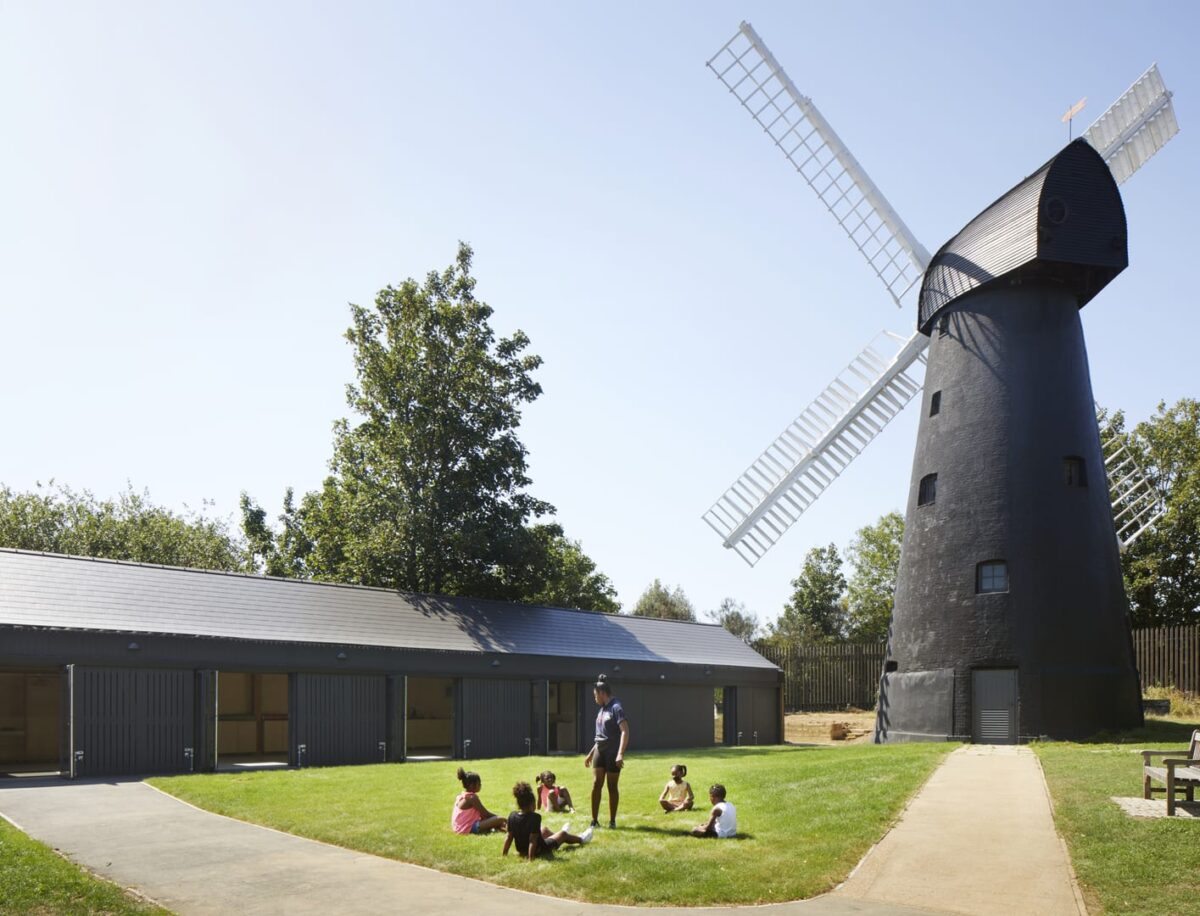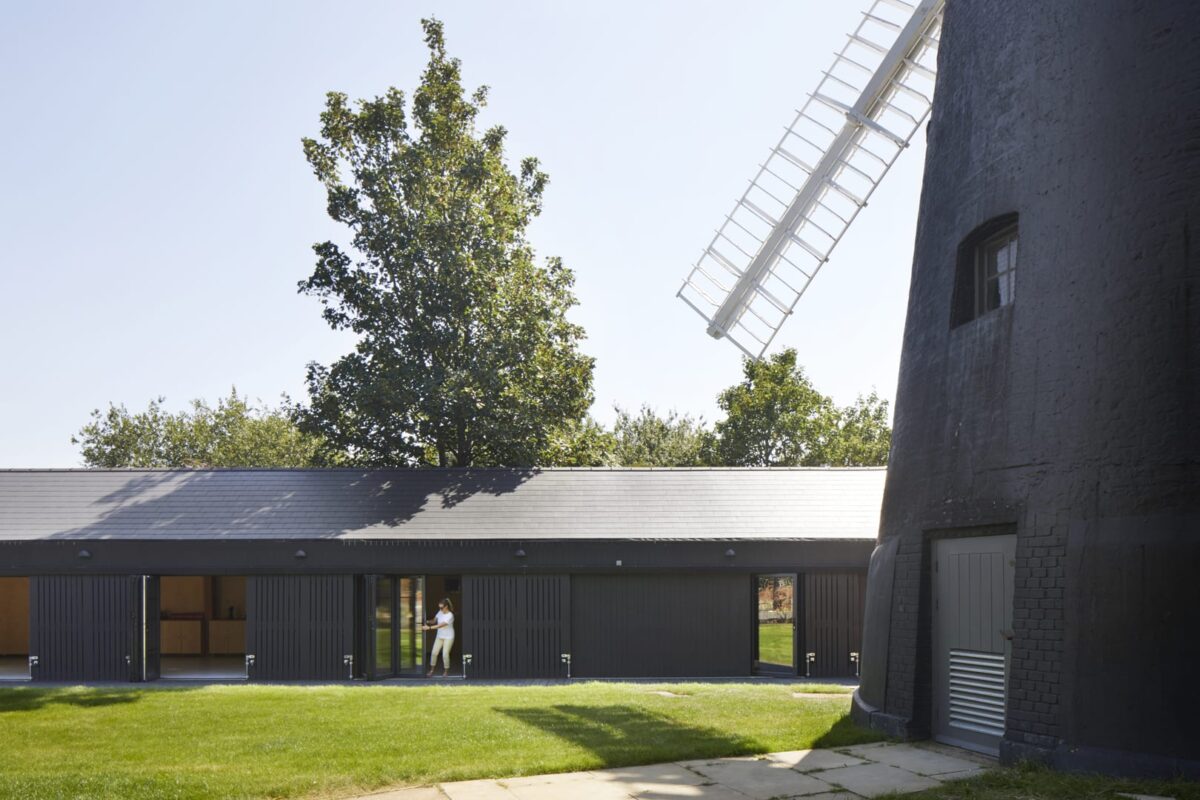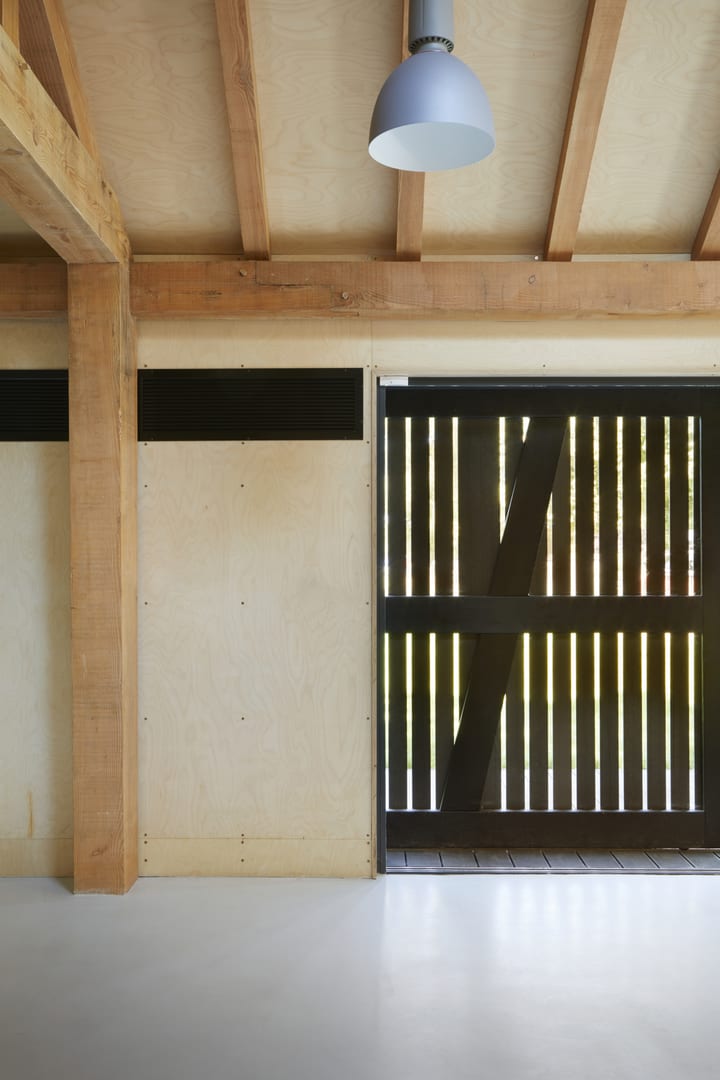The Education and Community Centre helps support the future of Brixton’s historic – and still active – windmill

Words by Francesca Perry
It’s not often that you get to visit, and write about, a new community centre in London. Far more usual are the announcements of eye-wateringly expensive luxury penthouses, elite workspaces or trendy private home extensions.
It is a joy, then, to arrive at the new Brixton Windmill Education and Community Centre designed by local practice Squire & Partners. A community hub and educational space adjacent to the historic – and still active – windmill, it has been long desired and planned by the local Friends of Windmill Gardens group and finally delivered with the help of Lambeth council funding.
Minimal and slight in the landscape of Windmill Gardens – the public park surrounding the windmill that was created in the 1960s to help protect it from the rapid spread of development – the single-storey building adopts a simple, Douglas fir timber frame as its structure and centres around one flexible, community hall-like space.

Externally, the building is clad in black weatherboard and mock-slate roof tiling, perfectly complementing the matte black of the nineteenth-century windmill’s pitch coating (a resinous substance obtained by distilling tar and used for waterproofing). In its low, long design the centre references the miller’s outbuildings which once occupied the site before being demolished when the park was created.
‘It was deliberately designed not to distract from the Grade II*-listed windmill,’ says Tim Gledstone, partner at Squire & Partners. ‘Following the demolition of the historic miller’s workshop and outbuildings in the 1960s, the windmill had become stranded. The new centre creates an accelerated vernacular drawing on the former outbuildings to establish a sister structure which provides for the activities held on site in a robust, flexible, sustainable and uplifting space. The beauty of the building is in the details and joy of the exposed timber frame, rather than any grand architectural statement.’

A core part of the project’s purpose is helping safeguard the future of the windmill as a protected historic structure, a working mill (London’s last surviving active one) and an educational hub. It does this not only through providing much-needed additional space for children’s workshops run with local schools, but also by functioning as a hireable event space and hosting a café and pop-up Brixton Windmill shop in order to provide a sustainable stream of revenue.
The building will also play a central role in the many community activities which take place in Windmill Gardens, including the annual Beer and Bread Festival, and provide space for an expanded activity programme including new adult educational workshops, community baking workshops and open days. Additionally, it can be used to store flour milled in the windmill, thus enabling the expansion of milling operations.
As well as the main hall space, the centre includes a large kitchen (for baking bread using the mill’s flour, as well as providing café facilities), a storage room, office and toilets. The Douglas fir frame visually dominates, complemented by ply-lined walls and a screed floor, giving the centre a rustic, barn-like feel. The black of the exterior is brought inside via subtle design touches including black-painted doors, vents and black bathroom tiling. A series of ply cabinets on wheels creates flexible configurations of the space.

South-facing rooflights bring additional natural daylight into the centre – which already receives plenty of light through the sets of glazed bi-fold doors on the northern elevation. On the exterior, slatted wood screens roll across these doors, giving greater security to the centre when shut – or privacy when needed. The wooden slats reference the wood of the windmill’s crowning weatherboard-clad cap, a boat-like structure which holds the sails and rotates in the wind.
Whether local residents have visited the windmill and participated in its activities, or simply recognised it as a neighbourhood landmark, it has long played a role in the community. Over the coronavirus lockdowns, the flour produced in the mill was given to local foodbanks. Now, Squire & Partners’ centre helps support and strengthen the mill’s future – in a visually discreet, but functionally active, way.
All photographs by Jack Hobhouse



















